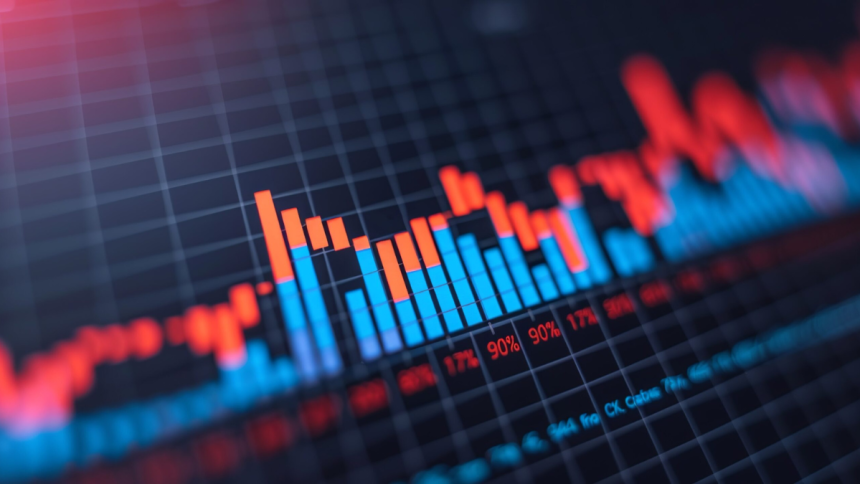In today’s global financial landscape, reading and responding to Dow Jones futures in real time is essential for traders looking to stay ahead of market moves. These futures contracts provide critical insights into investor sentiment and are often the first indicators of how the U.S. stock market may behave once it opens.
A solid understanding of the Dow futures chart, key price signals, and overall Dow futures overview allows traders to interpret real-time movement more effectively. Combined with consistently monitoring Dow Jones futures performance, this approach can lead to more informed trading decisions.
The Role of Dow Jones Futures in Market Forecasting
Dow Jones futures track the expected value of the Dow Jones Industrial Average and trade almost 24 hours a day. Because of this extended trading window, they offer traders the opportunity to act on global news before regular U.S. market hours.
When economic data is released early in the morning or major news breaks overnight, Dow futures are typically the first to reflect that sentiment. Real-time interpretation of these moves is central to a complete Dow futures overview.
Analyzing how futures react minute-by-minute allows traders to adjust their positions, hedge risk, or enter opportunistic trades long before the traditional stock market opens.
Analyzing the Dow Futures Chart in Real Time
To effectively use Dow Jones futures, traders must study the Dow futures chart closely. This chart displays live price movements and is typically viewed across multiple timeframes to suit different trading styles. Shorter intervals, such as one-minute or five-minute charts, allow for high-frequency trading, while longer timeframes, like hourly or daily, provide broader trend analysis.
Real-time interpretation involves watching how the price reacts at key support and resistance levels. Observing whether price breaks through or reverses from these zones gives clues about market sentiment. Price consolidation, sudden spikes, or trend reversals on the chart can all signal that a shift in momentum is underway. Although often delayed slightly in futures markets, volume adds another layer of confirmation when it rises or falls in sync with price movement.
When traders see consistent direction and strength reflected on the chart, especially around market open or after economic news releases, they are better equipped to make fast decisions about entering or exiting positions.
Monitoring Dow Jones Futures Performance During Market Hours
The concept of Dow Jones futures performance goes beyond just watching the price. It requires comparing current movement to historical behavior. Traders often track how the futures performed during similar market conditions in the past. This includes analyzing previous reactions to jobs reports, interest rate decisions, or corporate earnings.
For example, if Dow futures tend to gain steadily during earnings season, observing a strong move in real time that aligns with past performance may strengthen the case for a bullish bias. Conversely, if the futures are acting unusually weak despite positive economic news, this divergence could indicate caution among institutional traders.
Understanding performance also includes watching how the futures behave relative to indices like the S&P 500 or the Nasdaq. This relationship helps traders confirm whether a move is isolated or part of a broader market trend. The more consistent the behavior, the more reliable the interpretation becomes.
Context Is Key in Real-Time Futures Trading
Even the most precise analysis of the Dow futures chart and live Dow Jones futures performance must be placed in proper context. A sudden spike in the middle of the night may look dramatic on the chart but carry little weight without sufficient volume or a corresponding news catalyst. On the other hand, a strong move during active U.S. hours supported by fundamentals may reflect genuine conviction in market direction.
The best approach is a consistent Dow futures overview that combines technical analysis, historical performance, and real-time observation. This allows traders to understand not just what the market is doing but also why it’s doing it and how likely that movement is to continue.
Conclusion
Reading and interpreting Dow Jones futures in real time is a skill that requires both speed and insight. By understanding the behavior of the Dow futures chart, analyzing short — and long-term Dow Jones futures performance, and staying anchored in the broader Dow futures overview, traders can respond confidently to shifting market conditions. In an environment where milliseconds can make the difference, clarity and context are everything.
Lynn Martelli is an editor at Readability. She received her MFA in Creative Writing from Antioch University and has worked as an editor for over 10 years. Lynn has edited a wide variety of books, including fiction, non-fiction, memoirs, and more. In her free time, Lynn enjoys reading, writing, and spending time with her family and friends.















